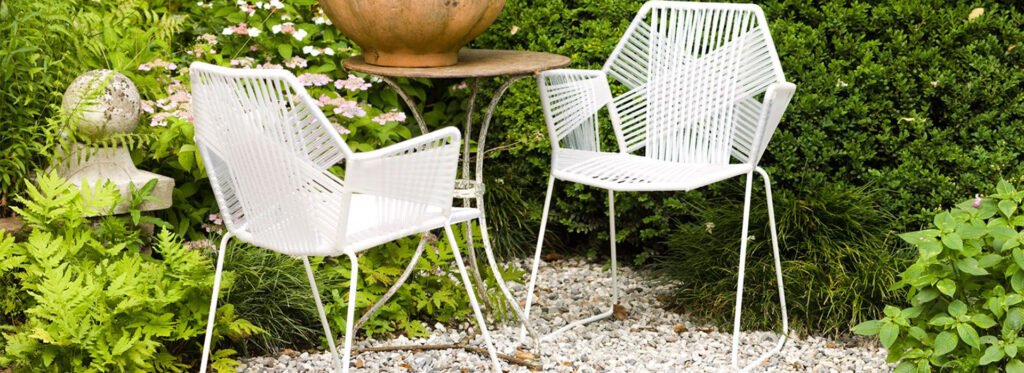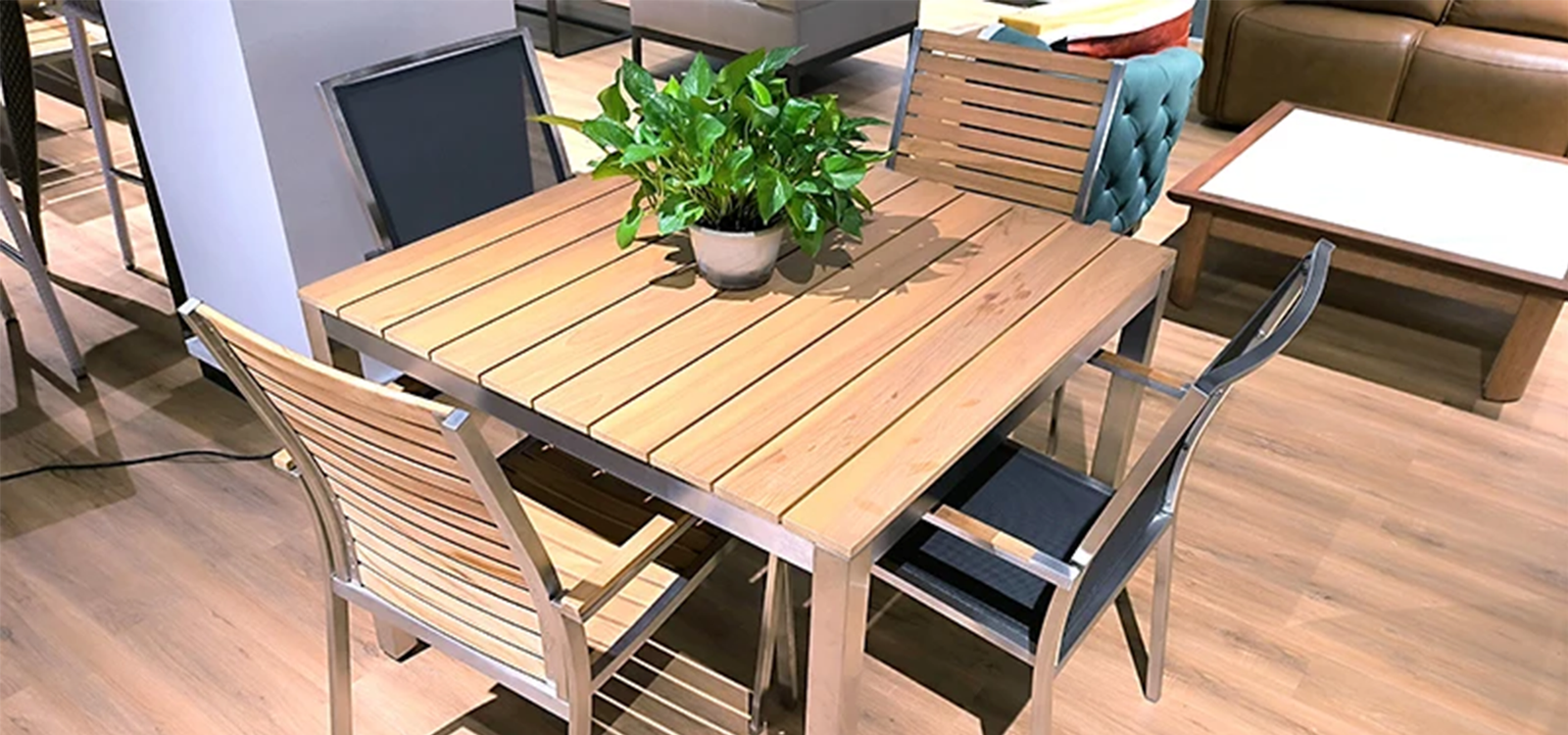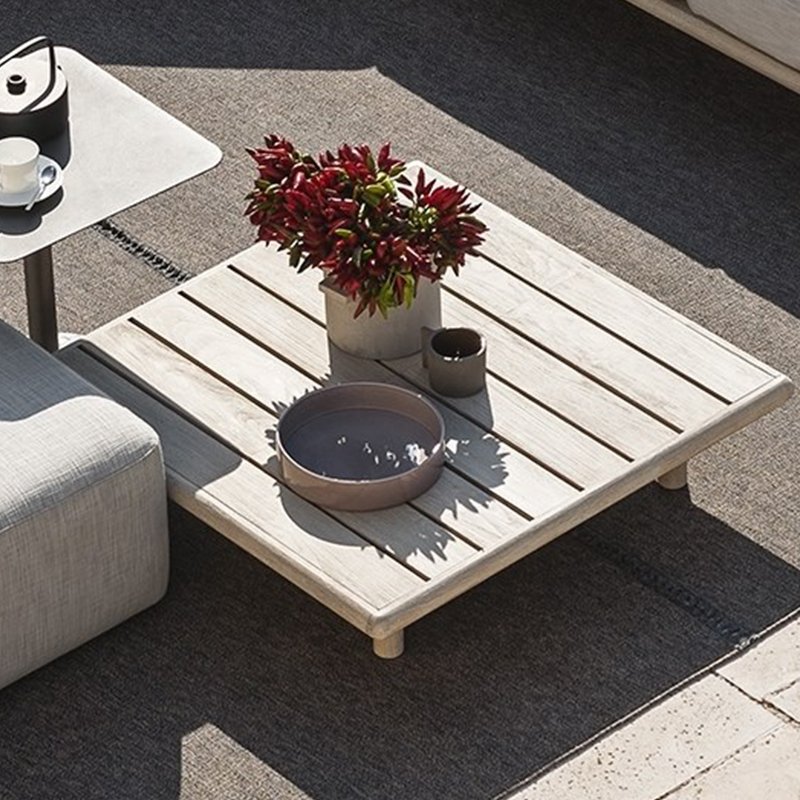Choosing the right material for your outdoor furniture is crucial for ensuring its durability, comfort, and style. With so many options available, it can be challenging to determine which material will best suit your needs. At Outdoor Whale, we understand the importance of making an informed decision when it comes to outdoor furnishings. Here’s a comprehensive guide to help you choose the best material for your outdoor furniture.
1. Teak
Pros:
- Durability: Teak is one of the most durable woods available for outdoor furniture. It is highly resistant to rot, insects, and weather conditions. This makes it an excellent choice for furniture that will be exposed to the elements year-round.
- Aesthetics: Teak has a beautiful, warm, golden color that ages gracefully to a silvery-grey patina over time. Its natural oils give it a luxurious look that enhances any outdoor space.
- Low Maintenance: Compared to other types of wood, teak requires minimal maintenance. Its natural oils protect it from moisture and pests, so it doesn’t need to be sealed or stained as often.
Cons:
- Cost: Teak is one of the more expensive options for outdoor furniture due to its durability and quality. However, its long lifespan can make it a worthwhile investment.
- Weight: Teak is relatively heavy, which can make it difficult to move. This might be a disadvantage if you frequently rearrange your outdoor space.
Teak furniture is ideal for those who want a long-lasting, beautiful, and low-maintenance option. Its timeless appeal and resilience make it a popular choice for high-end outdoor furniture.

2. Aluminum
Pros:
- Lightweight: Aluminum furniture is easy to move and rearrange, making it perfect for those who like to change their outdoor setup frequently.
- Rust-resistant: Aluminum does not rust, making it ideal for humid or rainy climates. It’s also resistant to corrosion, so it can handle exposure to the elements.
- Low Maintenance: Aluminum furniture requires little upkeep. A simple wash with soap and water is usually enough to keep it looking new.
Cons:
- Heat Retention: Aluminum can get very hot under direct sunlight, making it uncomfortable to touch. This can be a drawback in sunny climates.
- Stability: The lightweight nature of aluminum can make it less stable in windy conditions. It might not be the best choice for areas prone to strong winds.
Aluminum furniture is great for those who need a lightweight, durable, and rust-resistant option. It’s versatile and comes in a variety of styles to suit any outdoor space.

3. Wicker (Resin)
Pros:
- Aesthetics: Resin wicker offers a classic, timeless look that complements various outdoor styles. It mimics the natural beauty of traditional wicker but with enhanced durability.
- Durability: Resin wicker is weather-resistant and can withstand various climates. It doesn’t crack, fade, or splinter like natural wicker, making it a long-lasting option.
- Low Maintenance: Resin wicker is easy to clean and maintain. A quick wipe down with a damp cloth is usually sufficient.
Cons:
- Quality Variation: The quality of resin wicker can vary significantly. It’s important to choose high-quality options to ensure durability and longevity.
- Comfort: Wicker can be hard to sit on for extended periods, so cushions are often necessary for added comfort.
Resin wicker furniture is perfect for those who want the classic look of wicker without the maintenance. It’s durable, stylish, and easy to care for, making it a popular choice for outdoor living spaces.

4. Steel
Pros:
- Strength: Steel is incredibly strong and durable, providing a sturdy seating option that can support a lot of weight.
- Aesthetics: Steel offers a sleek, modern look that fits contemporary designs. It can be powder-coated in various colors to match any decor.
Cons:
- Rust: Steel is prone to rust if not properly treated and maintained. It’s essential to choose steel furniture that has been powder-coated or treated to prevent rusting.
- Weight: Steel is heavier than aluminum, making it harder to move. This can be a disadvantage if you like to rearrange your furniture frequently.
Steel furniture is an excellent choice for those who need strong, durable, and stylish outdoor furniture. It’s ideal for contemporary spaces and can withstand heavy use.

5. Plastic
Pros:
- Affordable: Plastic is one of the most budget-friendly options available for outdoor furniture. It’s great for those who need functional furniture without breaking the bank.
- Lightweight: Plastic furniture is easy to move and rearrange, making it perfect for portable setups or those who like to change their layout frequently.
- Weather-resistant: Plastic is resistant to water and won’t rust or rot. It can handle exposure to the elements without degrading.
Cons:
- Aesthetics: Plastic may not offer the same aesthetic appeal as other materials. It can look less sophisticated compared to wood or metal options.
- Durability: Generally, plastic is less durable and may not last as long as other materials. It can become brittle and crack over time, especially if exposed to harsh weather conditions.
Plastic furniture is ideal for those who need an affordable, lightweight, and weather-resistant option. It’s practical and easy to maintain, making it a popular choice for casual outdoor spaces.
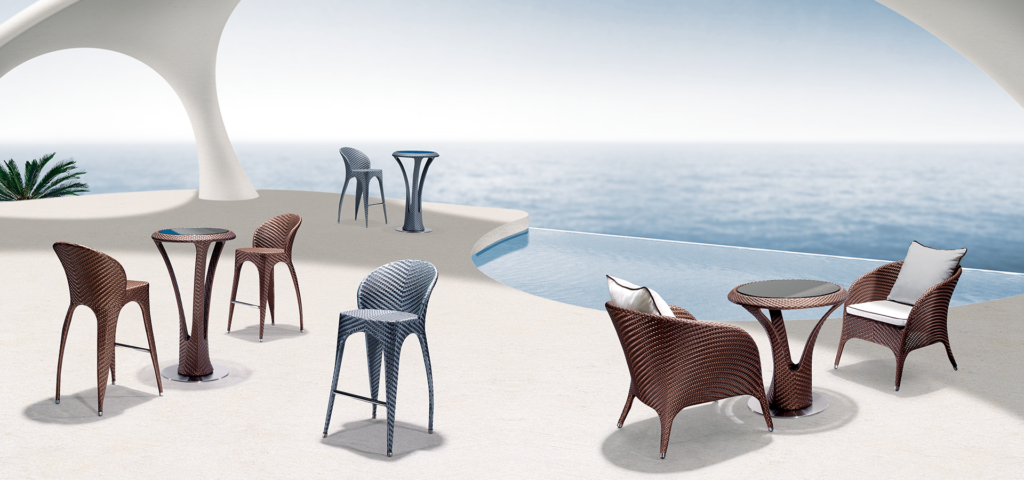
6. Wood
Pros:
- Natural Beauty: Wood offers a warm, natural look that blends well with outdoor environments. It adds a touch of rustic charm to any space.
- Variety: There are various types of wood available, each with unique properties and aesthetics. From cedar to eucalyptus, there’s a wood to suit every style and budget.
Cons:
- Maintenance: Wood requires regular maintenance, including sealing, staining, or painting. This can be time-consuming and costly over time.
- Susceptibility: Wood is prone to rot, insect damage, and weathering if not properly cared for. It’s essential to choose wood that is naturally resistant to these issues or has been treated.
Wood furniture is perfect for those who appreciate natural beauty and are willing to invest time in maintenance. It offers a variety of options and can be customized to fit any outdoor space.

Additional Considerations When Choosing Outdoor Furniture Material
Climate Considerations
Your local climate plays a significant role in determining the best material for your outdoor furniture. Here are some climate-specific considerations:
- Humid Climates: Materials like aluminum and resin wicker are excellent choices for humid environments as they resist moisture and won’t rust or rot.
- Dry Climates: Teak and other durable woods are suitable for dry climates. However, they still require regular maintenance to prevent cracking and splitting.
- Coastal Areas: Saltwater can be harsh on outdoor furniture. Opt for materials like aluminum and high-quality resin wicker that can withstand the corrosive effects of salt air.
- Cold Climates: In regions with freezing temperatures, choose materials that can handle extreme cold without becoming brittle or cracking. Teak and aluminum are good options.
Maintenance Requirements
Consider how much time and effort you are willing to invest in maintaining your outdoor furniture. Here’s a quick guide to the maintenance needs of different materials:
- Low Maintenance: Aluminum, resin wicker, and plastic require minimal upkeep. A simple wash with soap and water is usually sufficient.
- Moderate Maintenance: Teak and other durable woods need periodic cleaning and oiling to maintain their appearance and longevity.
- High Maintenance: Steel and certain types of wood require regular treatment to prevent rust and decay. This can include painting, sealing, and covering during inclement weather.
Budget
Your budget will also influence your choice of material. Here’s a breakdown of typical costs:
- High-End: Teak and high-quality steel furniture tend to be more expensive due to their durability and aesthetic appeal.
- Mid-Range: Aluminum and resin wicker offer a good balance of affordability and quality.
- Budget-Friendly: Plastic and certain types of wood are generally more affordable but may require more frequent replacement or maintenance.
Aesthetics
The appearance of your outdoor furniture is important for creating a cohesive and inviting space. Here’s how different materials can influence the look of your outdoor area:
- Natural Look: Wood and teak offer a warm, natural appearance that blends seamlessly with outdoor environments.
- Modern Look: Steel and aluminum provide a sleek, contemporary look that’s perfect for modern designs.
- Classic Look: Resin wicker offers a timeless, elegant look that complements traditional and transitional styles.
- Casual Look: Plastic furniture is versatile and can be found in a variety of colors and styles, making it great for casual, laid-back settings.
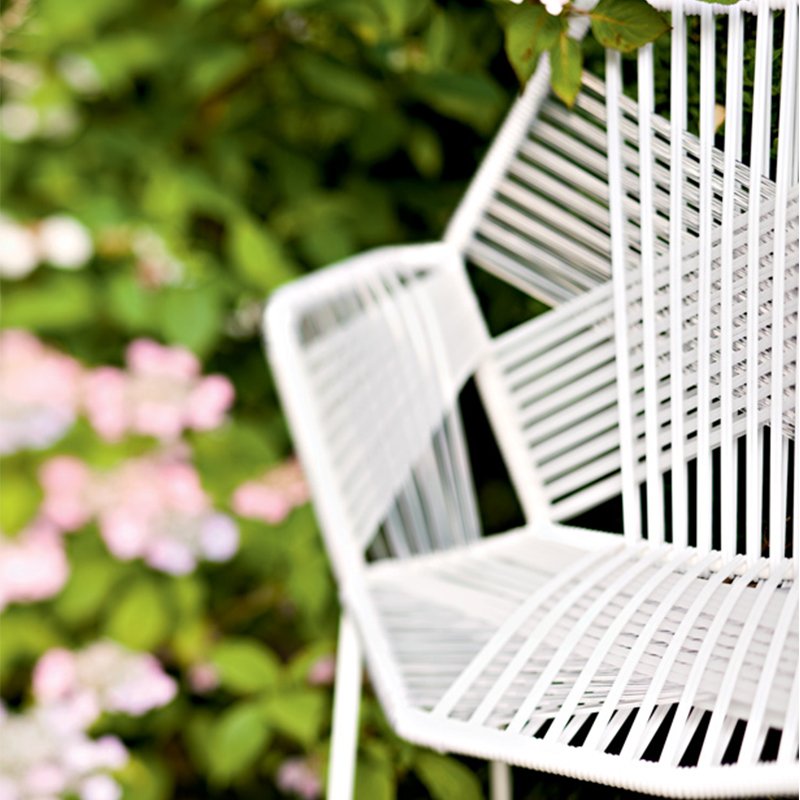
Combining Materials for Optimal Results
In many cases, combining different materials can provide the best of both worlds. Here are some popular combinations:
- Wood and Metal: Combining wood with metal frames can provide the natural beauty of wood with the strength and durability of metal. This is a popular choice for tables and chairs.
- Wicker and Aluminum: Resin wicker paired with aluminum frames offers a classic look with modern durability. This combination is often seen in sofas and lounge chairs.
- Plastic and Metal: Plastic seats with metal frames can provide an affordable and durable option that’s easy to move and maintain.
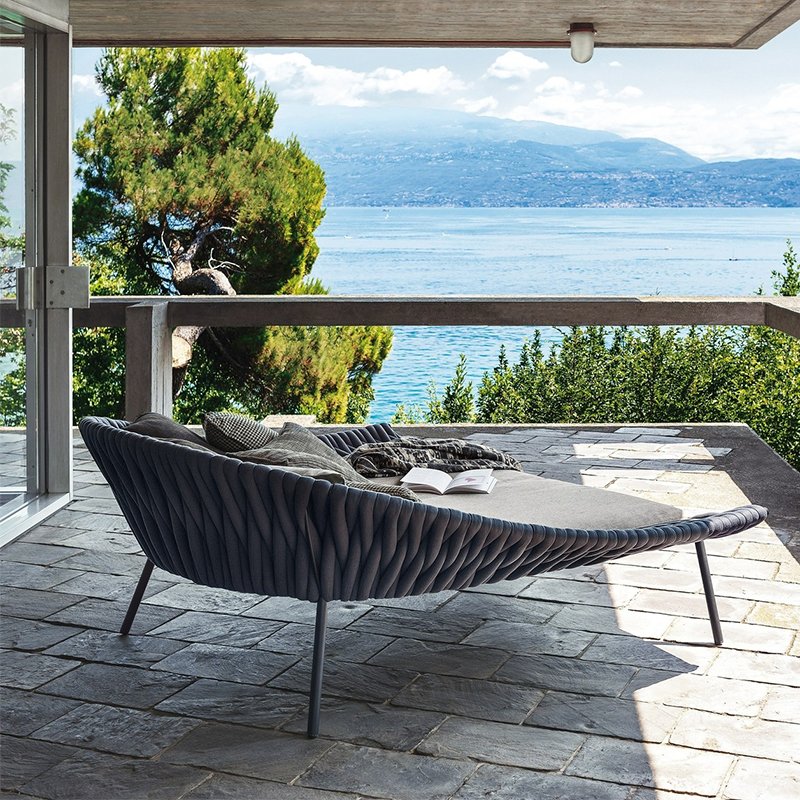
Practical Tips for Choosing Outdoor Furniture Material
- Test Before You Buy: If possible, visit a showroom or store to see and feel the furniture in person. This will give you a better idea of the material’s quality and comfort.
- Check for Warranties: Many high-quality outdoor furniture pieces come with warranties. This can provide peace of mind and protect your investment.
- Consider Your Space: Think about the size and layout of your outdoor area. Choose furniture that fits well and complements the space without overcrowding it.
- Accessorize: Don’t forget about cushions, pillows, and covers. These can add comfort and style while also protecting your furniture from the elements.
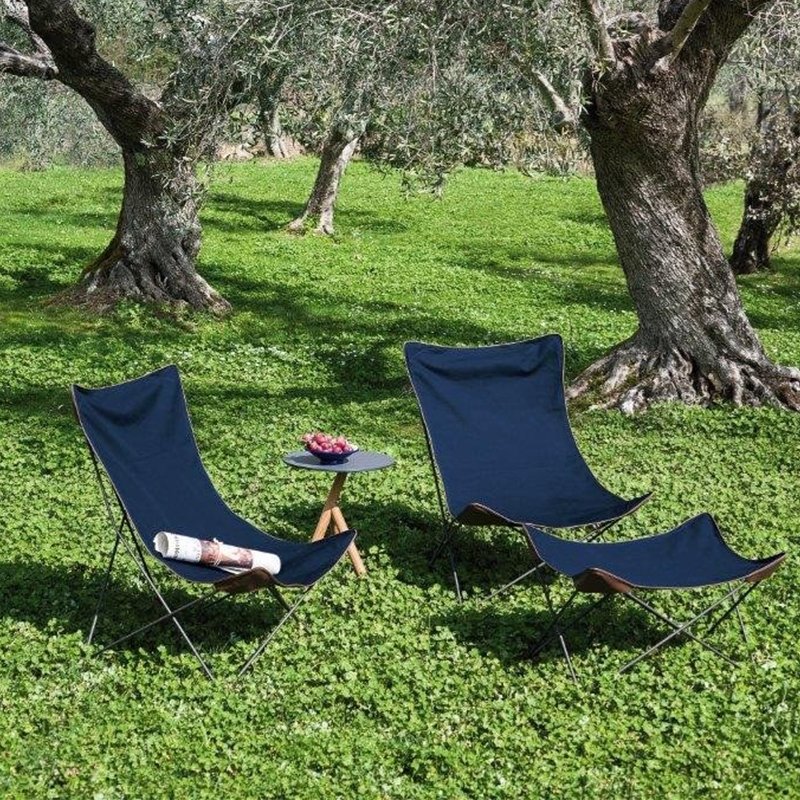
Making the Right Choice
When choosing the best material for your outdoor furniture, consider the following factors:
- Climate: Choose materials that can withstand your local weather conditions.
- Maintenance: Consider how much time you are willing to invest in maintaining your furniture.
- Budget: Select a material that fits within your budget while meeting your quality expectations.
- Aesthetics: Ensure the material complements your outdoor space’s style and design.

Final Thoughts
Selecting the right material for your outdoor furniture is a crucial step in creating a comfortable, stylish, and durable outdoor living space. At Outdoor Whale, we offer a wide range of outdoor furniture options made from high-quality materials to suit every need and preference. Whether you’re looking for the durability of teak, the versatility of aluminum, or the classic appeal of wicker, we have something for everyone.
For more information and to explore our collection, visit our website or contact us at info@ligointl.com. Let us help you create the perfect outdoor oasis with furniture that combines style, comfort, and durability.
Outdoor Furniture Materials and Durability
- Choosing Outdoor Furniture: What is the Most Durable Outdoor Patio Furniture?
- What are the Best Materials for Outdoor Furniture?
- Choosing Durable Outdoor Furniture Materials: Aluminum, Wood, Wicker, and More
- Wicker vs Rattan: What is Best for Patio Furniture?
- The Ultimate Introduction to Rope Outdoor Furniture
- How to Choose the Best Wood for Patio Furniture
- The Best Outdoor Wicker Furniture Brands
- The Best Teak Patio Furniture Brands for Luxury Outdoor Living

